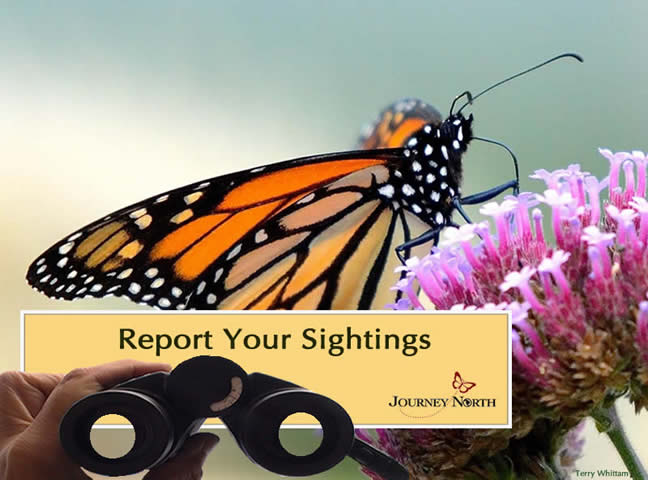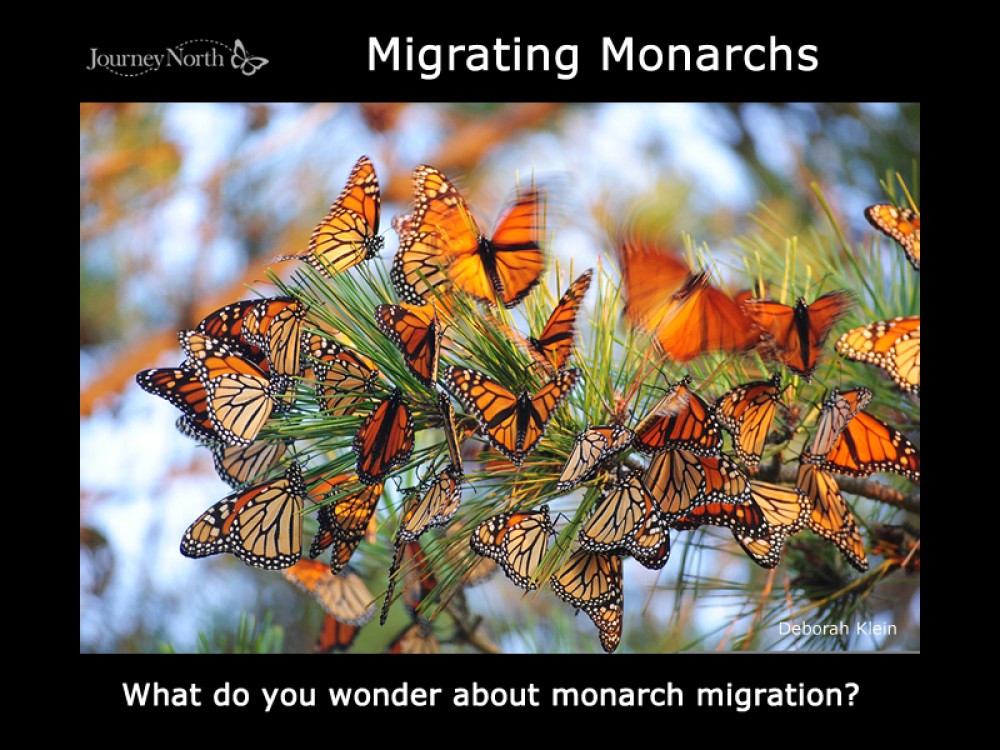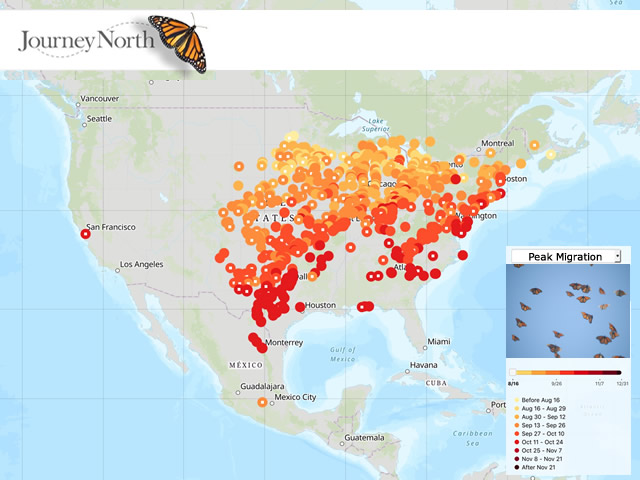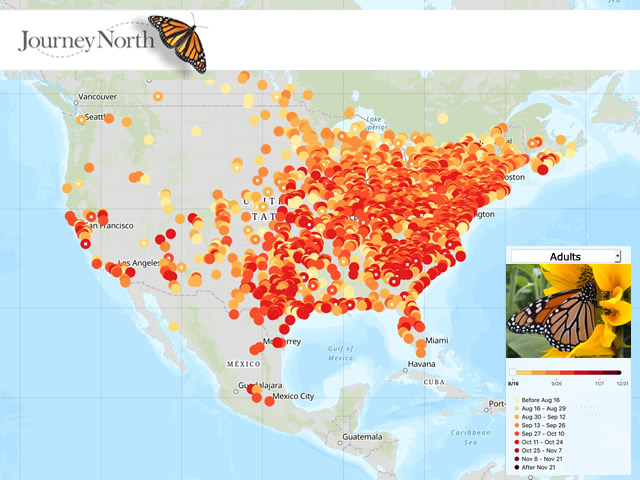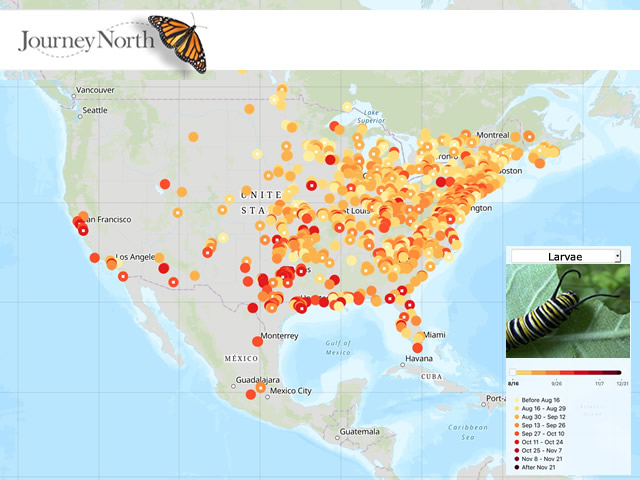Fall Migration is Underway!
Monarchs Are on the Move
The season is off to an impressive start. Overnight roosts - a classic sign of fall migration - have already been reported from 6 states and 1 province. The first was seen on August 11th (one of our earliest dates ever), 17 sites have been found, and three sites have contained 1,000 butterflies. Numbers this high and this early are a promising sign of a successful breeding season. Get ready for an eventful fall migration!
Monarchs Are Changing
Monarchs are changing dramatically at this time of year, in physiology and in behavior. They are:
1. Becoming Migratory
Watch for signs of migratory monarchs:
- flying in directional flight
- clustering in overnight roosts
- nectaring intensely
2. Responding to Daylength
Declining daylength (photoperiod) is a central cue that triggers the monarch's migratory state. In the northern breeding range, photoperiod is falling by 20 minutes this week.
3. Emerging in Diapause
Beginning in mid-August in the north, adults are in diapause when they emerge from the chrysalis. They are full grown — but not reproductively mature. Their reproductive development is on pause. These monarchs will not complete development and begin to mate until next spring in Mexico.
4. Beginning a Long Life
The same hormone deficiency that leads to diapause also leads to increased longevity. Breeding monarchs live only 2-6 weeks; migratory monarchs live up to 8 months.
5. Accumulating Fat
Monarchs are shifting focus now from breeding to intense feeding. They must build body fat to fuel migration and to survive the winter in Mexico.
Journal: Documenting the Journey
Fall Monarch Migration 2018
Please report all monarchs you see:
- Adults
- Eggs & Larvae
- Overnight Roosts
- Peak Migration Events


